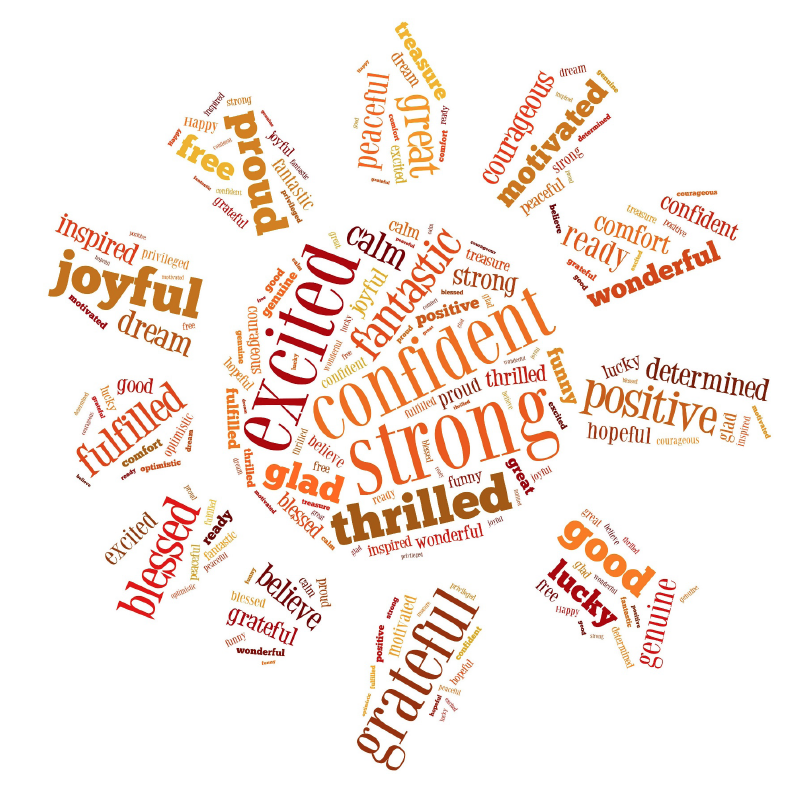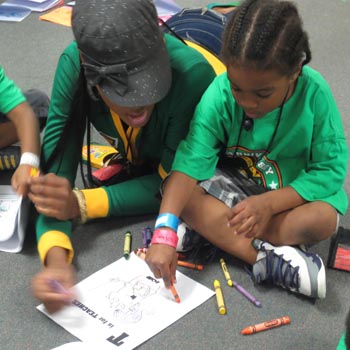FAQs
Do you have a tip to share? Do you need some guidance or suggestions for implementing? You’ve come to the right place! Search these archives to see if your question is answered or click here to submit a question or suggestion.



What is the CBSG® Program?
The CBSG® Program is a multi-cultural preventive intervention for selective and indicated populations of children and youth, ages 4-17 , whose high-risk situations, attitudes and behaviors place them at elevated risk for substance abuse, delinquency and violence. The CBSG® Program provides an evidence-based curriculum of coping, social and substance abuse prevention skills delivered in a highly-structured support group process by a trained, caring group facilitator.
Selective Populations Appropriate for Inclusion in the CBSG® Program: CBSG® Program literature (Brown, 2002) defines an appropriate selective population as being: “children and youth living in high-risk situations that involve adverse childhood experiences.” The focus is on the situation rather than on the individual, with the presence of the high-risk situation being the reason for the referral of the individual into the program. “High-risk situations” are defined as including (but not limited to): substance abusing or addicted parents/siblings; parents and/or siblings engaged in crime or violence; residing in a homeless family or domestic violence center; living in severe poverty; living in foster care or living in a group residential setting awaiting foster care; experiencing family separation or divorce; and living/going to school in decaying, disorganized and/or crime/drug affected neighborhoods.
Indicated Populations Appropriate for Inclusion in the CBSG® Program: Children and youth (who may or may not live in high-risk situations) who display observable deficits in coping and social skills and/or early signs of anti-social attitudes and behaviors, including substance use. The focus is on the attitudes and behaviors of the individual rather than on the situation, which may be a confounding risk factor, but not the reason for referral into the program.
CBSG® Program Facilitator Manual: The same age groupings, topics, format and activities are used in all CBSG® Program implementation settings. Spanish translations of participant materials are included. Because different settings have unique needs, there is a separate CBSG® Program Facilitator Manual for use in:
- Schools & Community-Based Settings
- Shelters, Group Homes & Transitional Settings
- Christian Faith-Based Settings
NOTE: To accommodate grant and contract requirements, the age groupings for schools and community-based settings are also available in separate volumes under the names Kids’ Connection (For Ages 4-12) and Youth Connection(For Ages 10-17.)
How is the CBSG® Program implemented?
The Rainbow Days’ CBSG® Program has been successfully implemented throughout the United States, in Ecuador and in England in a variety of settings, including schools, after-school programs, recreation centers, homeless shelters, group homes, outreach programs, churches, alternative schools, and juvenile detention centers.
- Participants are grouped by age and developmental level, with group size being limited to 6 to 12 members, depending on age and development.
- The CBSG® Program versions for schools and community-based sites and Christian faith-based settings do not allow new members after the second session, thus being identified as closed groups. The version for shelters, group homes and transitional settings allows an exception to this rule; as an open group.
- Typically, there are 10 sessions for selective populations and 12 sessions for indicated populations, plus optional pre/post evaluation survey sessions. Session duration is the same period of time as one regular school class period – or 30 minutes for Pre-School or 60 minutes fro all other ages. Sessions are conducted either weekly or bi-weekly depending on the setting.
- All group sessions are held in private, youth-appropriate settings.
- Group rules provide for member confidentiality.
What materials are needed to implement the CBSG® Program?
The CBSG® Program Facilitator’s Manual is available for schools & community-based settings; shelters, group homes and transitional settings and Christian faith-based settings.
Rainbow Days Training conducts a required, comprehensive, CBSG® Program Facilitator Training, which prepares participants to implement the program and includes a CBSG® Program Facilitator’s Manual. The Manuals are only available to trained facilitators.
The CBSG® Program Facilitator’s Manuals are designed to be self-contained and facilitator-friendly. They contain handout masters on CDs or USBs that can be copied for the children/youth participants. Facilitators need to supply basic art/craft supplies such as paper, crayons, markers, glue sticks, etc.
Do you have to call the Sunshine & Cloud opening ritual, Sunshine & Cloud?
Glad you asked! We’ve had many lively discussions about this during trainings. Below are some alternative ideas. Whichever you choose, make it consistent so your group participants know what to expect when you ask them to share something that makes them happy or something their proud of and, something that makes them sad or mad.
- Highs & Lows
- Roses & Thorns
- Highlights & Bummers
- Happy & Crappy
Do I have to use Sunshine & Cloud (S & C) exactly the way it’s described in the curriculum? The faces seem babyish for the populations we serve.
Great question! This is a conversation that often comes up during curriculum trainings. First of all, the process of the S & C is essential. To check in with the feelings of the group participants is foremost in the CBSG support group setting. Many youth facilitators find using the S & C without faces perfect in these cases. The faceless S & C is included in the Youth Connection Activities CD or USB. If you do not have access to a Youth Connection Activities CD or USB, click here to download the masters for printing.
I had an elementary age group participant ask why we didn’t use a lightning bolt with the Sunshine & Cloud. He said the Sunshine has a happy smiling face, the Cloud has a sad frowning face, and asked if we could add a lightning bolt for our angry feelings! Are we able to add that to our S & C Opening Ritual?
Yes! I love this young man’s “feeling” heart! What a great addition this will make to your Opening Ritual especially for younger children or for any of us who are visual learners. Please send us a copy of your Lightning Bolt so we can share it with others!
Do you have any fresh ideas for our Group’s Sunshine and Cloud?
It’s been a long time since I’ve attended a training! What does CBSG® Program stand for?
Reminders are always needed! CBSG® Program is the registered name for our Curriculum-Based Support Group. It is the collective name for our four Program adaptations, which are: Kids’ Connection, Youth Connection, Kids’ Connection, Too, and Faith Connection.
Is it necessary to use the curriculum names or “Rainbow Days” in the marketing or advertising of groups?
Absolutely not! As a matter of fact, it has come up during trainings that the use of the word “connection” (as in Kids’ Connection, Youth Connection, etc.) sounds too much like a drug hook up in certain areas of the country. We have an organization out of Ft. Worth that has been using the title “Sunshine Club” for their groups for years. Usually the only place you MUST use the Developer’s name or the actual name of the program (CBSG® Program, Kids’ Connection, Youth Connection, Kids’ Connection, Too, or Faith Connection) is in your funding material.
Is it within fidelity to create new handouts that better connect with the populations we serve?
It depends. The best thing to do is submit your idea on this site for approval. If it is approved, your idea will be shared on this site (with kudos to you!) where it can be helpful to others as well. One example is in Session 5 Dreams and Goal Setting there is an activity entitled Dream Sneaker. One of our Rainbow Days facilitators was working with young women in youth detention, she designed a Dream Shoe. Want a master, click here.
We’ve also got some great parent handouts related to the Goals and Key Points of Kids/Youth Connection, Faith Connection and Kids’ Connection, Too.
Is the CBSG® Program available in Spanish?
The handout masters for all participant activities are available in Spanish on CDs or USBs and in all CBSG® Program adaptations.
